There are many popular hikes in Garibaldi Provincial Park, but one of the best is Elfin Lakes. The lakes, though pleasant, aren’t the main reason to make the trip up—it’s all about the view.
While it’s possible (and common) to hike up to the lakes and back down as a day trip, that would involve missing out on the phenomenal experience of spending the night. It’s one of the nicest places to camp in the whole region, especially considering how accessible it is. It’s also a base camp of sorts for several fantastic side trips in the area.
One lovely August weekend, my partner and I trekked to Elfin Lakes and spent two nights (plus one rainy day in the middle). As a popular campground in a provincial park, it’s necessary to reserve a campsite in advance—well in advance. Particularly on weekends, it can be very difficult to get a spot, but we managed.
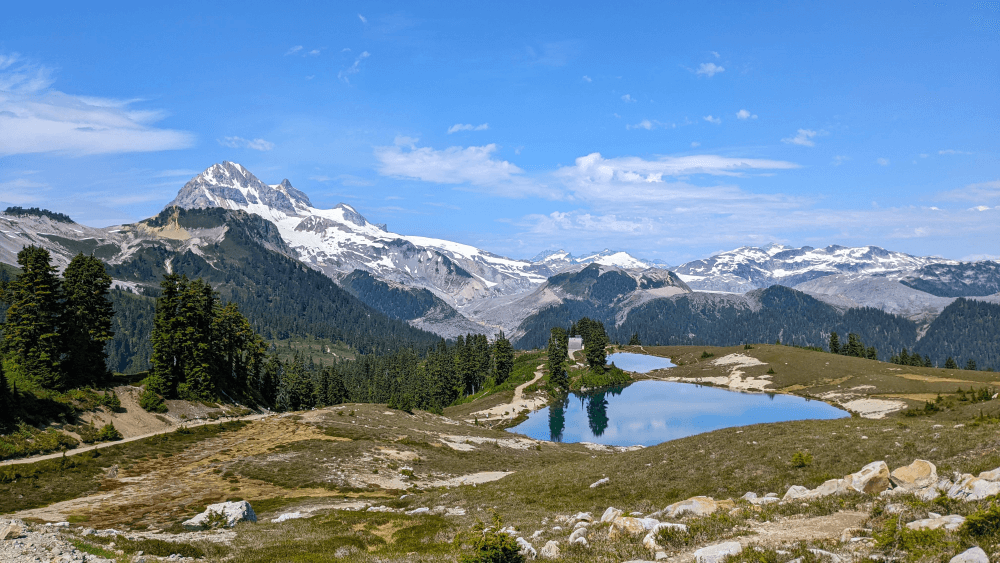
Ascending to Elfin Lakes
The hike up to Elfin Lakes started almost within the town of Squamish. It’s just a few minutes’ drive up a series of gravel roads. The first part of the trail itself was essentially a gravel road, too. The quality of the trail was very high, and easy to walk on. It also featured a steady incline for the first 6 kilometres or so as the trail gains over 600 metres in elevation. Not too gruelling a trek, but certainly challenging enough for us in 30-plus-degree heat with overnight packs.
The first part of the trail was mostly forested, which certainly helped with the heat. There were breaks here and there in the forest hinting at the views to come, but mostly there wasn’t much to look at until we reached the Heather Shelter after about 4.5 kilometres. From there, the trees began to thin out and the trail became rocky as it climbed toward the alpine area. Around the 6 kilometres mark the trail reached its peak.
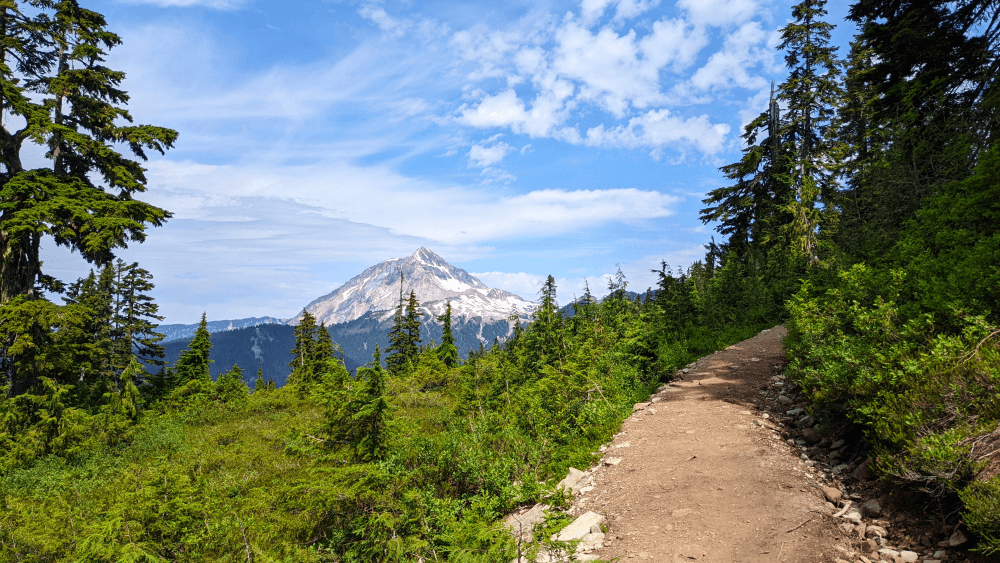
From there, it actually descended slightly for the final 4 kilometres or so, though really it was a matter of short ups and downs. At the height of one of the ups, we finally spotted the lakes. By this point, the trail was almost entirely free of tree cover, so there was plenty to look at in all directions—especially the imposing figure of Atwell Peak and Diamond Head. Basically, it was worth all the effort even before arriving at the actual campground.
The campground at Elfin Lakes had all the basic facilities one would expect from a popular provincial park, such as a shelter, bear hangs, pit toilets, and tent platforms. But most importantly, it has an almost 360-degree view of the mountains and glaciers surrounding it. That alone makes it worth spending at least a night.
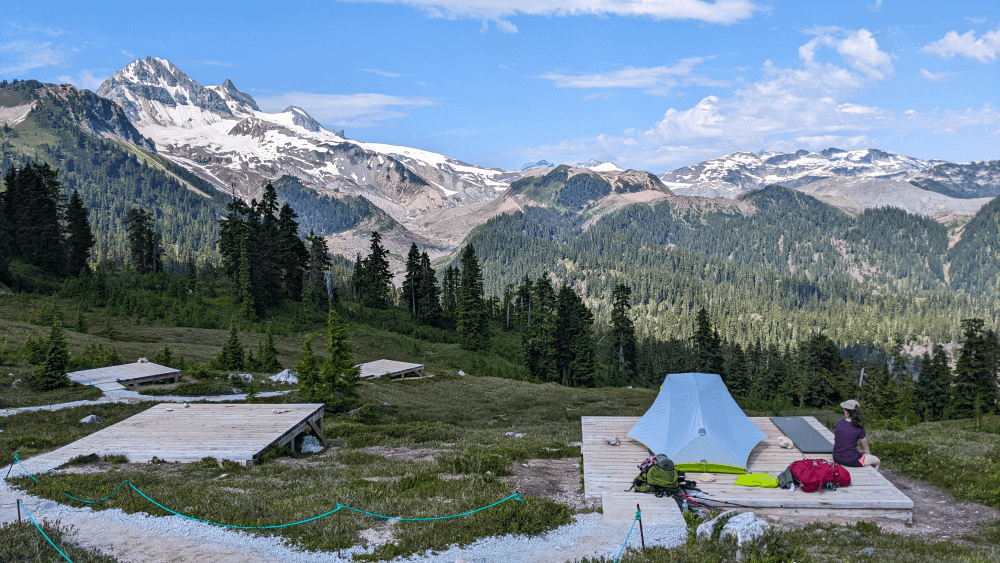
After claiming a tent platform, the first thing I did was jump in the lake. It wasn’t nearly as cold as you’d normally expect a mountain lake to be—it was actually the perfect temperature for a refreshing swim.
Following that, there wasn’t much to do except sit around and enjoy the scenery, or watch the day hikers and mountain bikers come and go. By the end of the day, essentially all of the tent pads had been claimed by campers, so even then it was fairly lively.
The evening’s weather was excellent, though it must be said that there were a lot of flies—a little wind might have been nice. We ate dinner outside and enjoyed the late sunset, slapping ourselves repeatedly all the while. Even powerful bug spray doesn’t totally stop the onslaught.
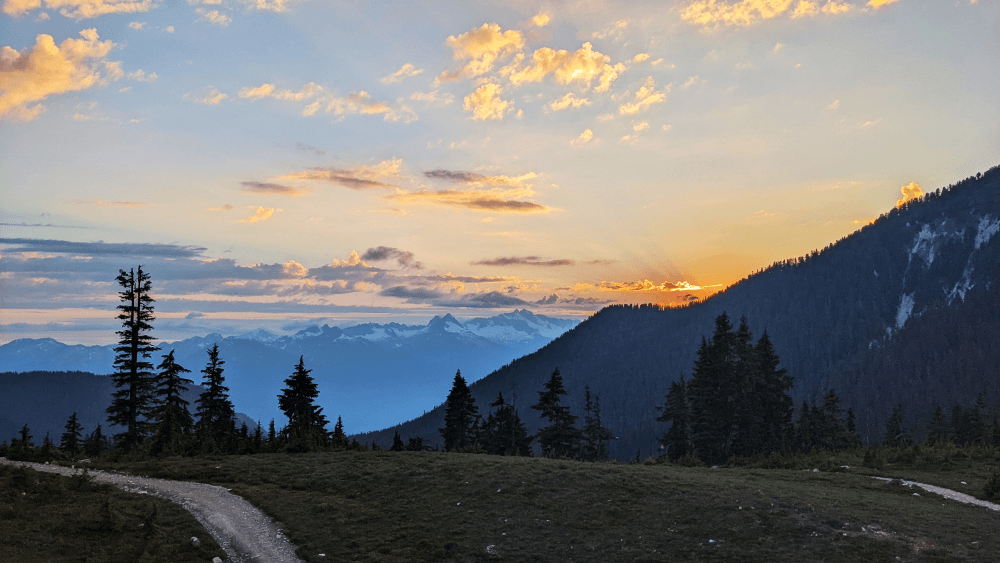
Daytrip to Opal Cone
One of the most popular side trips from Elfin Lakes is to Opal Cone, a cinder cone beneath Mount Garibaldi. The views from Opal Cone are said to be tremendous, but I can’t say with any authority whether that’s true. We woke up in the morning to fog, overcast skies, and periodic rain—none of which improved much throughout the day.
Despite the weather, we left the campground in the morning and started toward Opal Cone. Even with low clouds obscuring the peaks above, the scenery was plenty enjoyable. The first part of the trail winds through forest, before descending into a rocky valley and following alongside Ring Creek. Given the year’s above average snowpack, the creek was roaring even in mid-August. This would prove to be something of an ill omen.
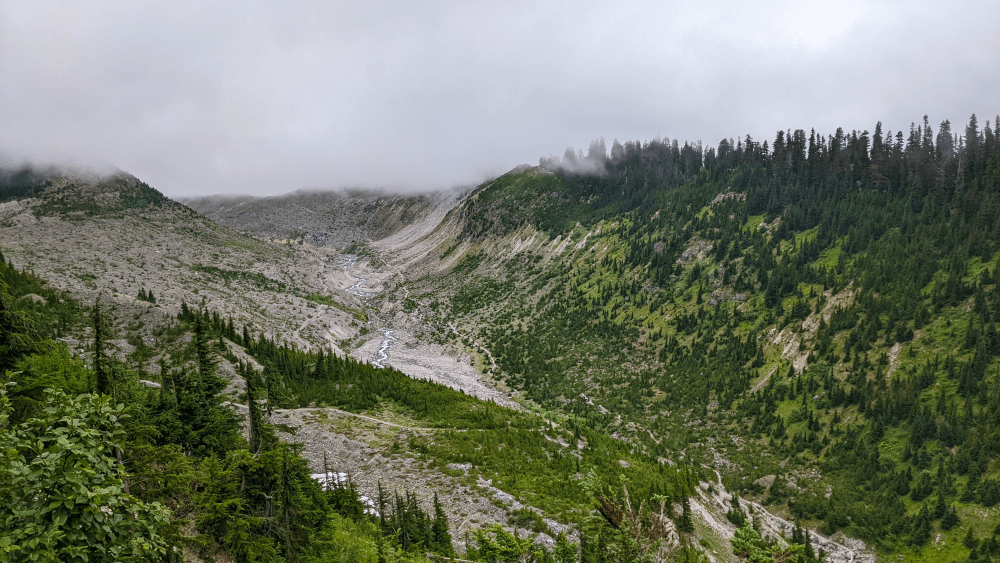
The climb up the other side of the valley took us right into the clouds, so we lost even the modest views we’d been enjoying. We reached the junction, with one path leading up Opal Cone and the other continuing to Mamquam Lake. We decided to take a detour toward the latter while we waited for the weather to (hopefully) improve.
Just beyond the junction was a large, apparently unnamed glacial lake. The scenery around this area was almost tundra-like, covered with nothing more than grass, rocks, snow, and ice. We walked along the edge of the lake as far as we could, but eventually reached a point where the trail went straight into the water—the snowmelt was so great that the trail was flooded.
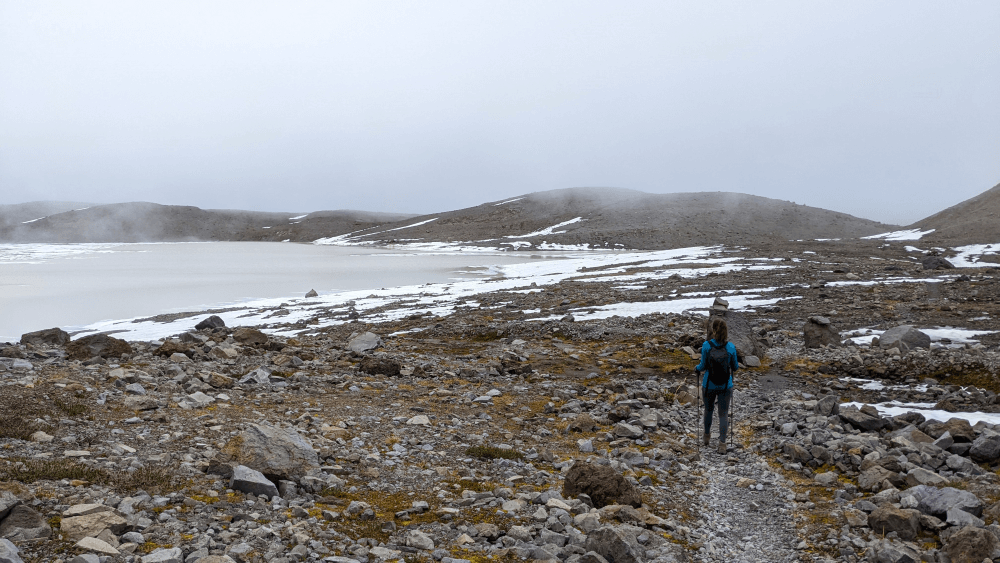
Though the weather still hadn’t improved, we decided to head up to Opal Cone anyway. It’s not far from the junction to the summit, and we still had plenty of daylight left, after all. While it’s not a great distance to the top, it’s also not an easy walk. Having lost the main (unmarked) trail, we scaled an almost vertical wall of gravel and loose rock before finding the trail again. Note to those climbing Opal Cone in the future: when you get to the steep, reddish-coloured gravel, keep to the left.
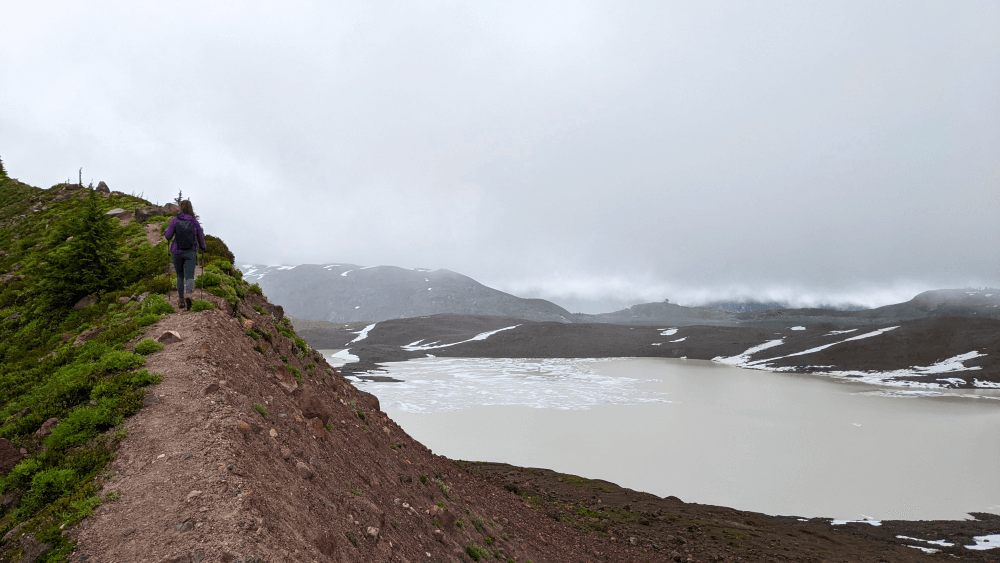
The top was cold, windy, and foggy. Needless to say, I have no idea if it’s nice at the top of Opal Cone—but I’d be willing to bet that it is. We had lunch at the top, hoping we’d get a lucky break, but we never did. We left a while later soaking wet and cold. Such is life.
On the way back to Elfin Lakes, the weather improved marginally. We did get to see a few glimpses of Mount Garibaldi. We also got to see a couple of marmots chasing and fighting each other, which was even better. The evening’s weather never really improved, but at least the cold seemed to improve the bug situation, so it wasn’t all bad.
Of course, the weather the next day was fine again. We woke up early to a brilliant sunrise, and cool weather for the hike back to the trailhead.
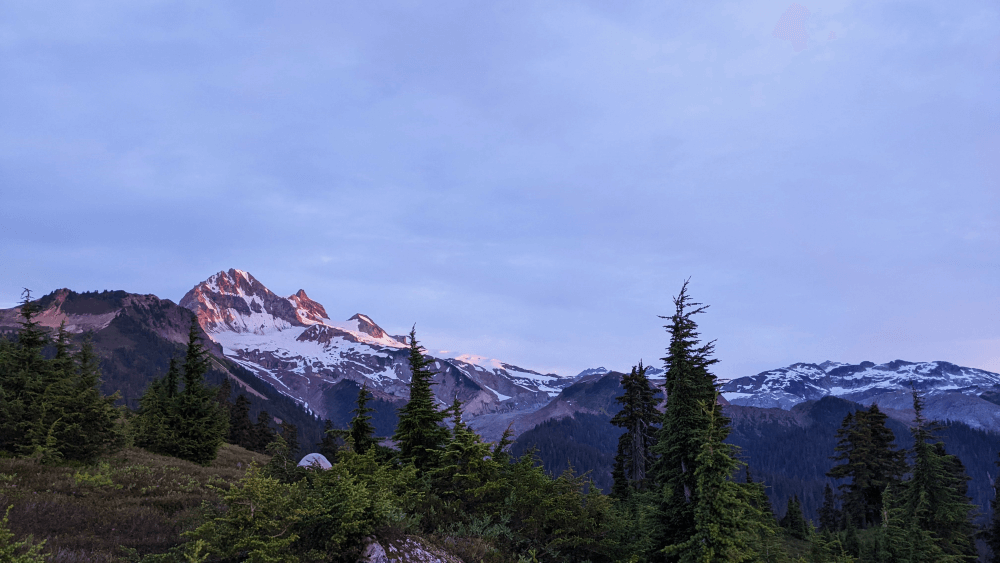
Questions or comments? Leave ’em below. Want to read another overnight backpacking story? Check out this story about the exhausting hike to Wedgemount Lake.

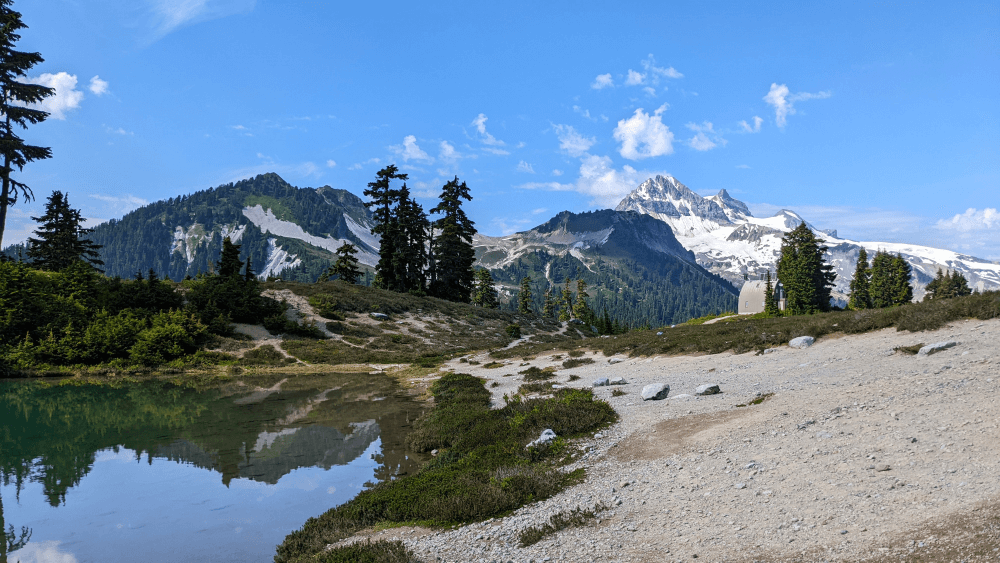
Does the hut still exist? Is it available?
When we visited in summer 2022, the hut at Elfin Lakes was closed for renovations. It appears that it still is, at least according to the BC Parks page: https://bcparks.ca/garibaldi-park/
Edit: sorry, I wrote 2023, but I meant summer 2022.
What are the tent platform sizes, can be for two 2-person tents?
Hey, sorry I missed your comment! I couldn’t tell you the exact measurements, but several people there had set up multiple small tents on a single platform.